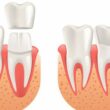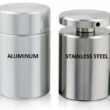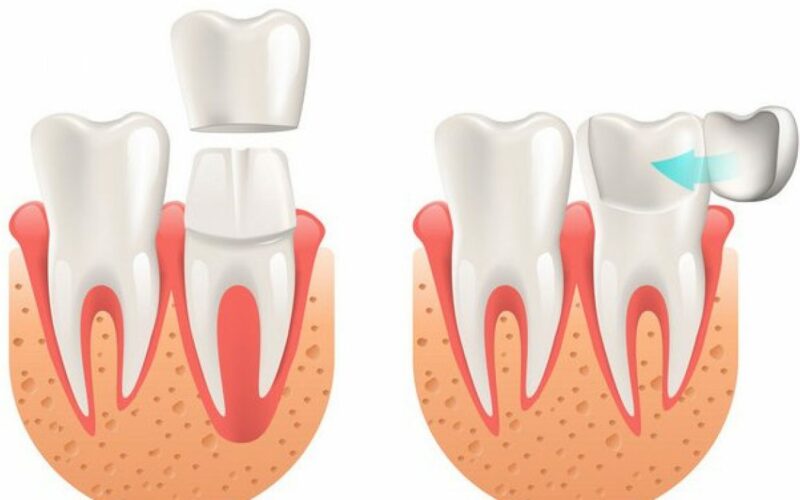A lot of people struggling with unattractive and downright painful tooth problems are interested in veneers vs crowns. These two popular dental restoration forms are trusted by dentists to boost the look and feel of teeth, but there are some key differences to keep in mind if you’re thinking about getting one. Here’s what you should know about investing in veneers or crowns.
Key Definitions and Differences
- A veneer is a light porcelain layer bonded to the front of the current tooth.
- A crown is twice as thick as a veneer and covers the complete tooth.
- A veneer is around 1 millimeter (mm) thick, made out of porcelain or resin composite, while a crown may be complete porcelain, an all-metal alloy or a combination of both.
- The veneer process is minimally invasive. It keeps the present tooth intact, while a crown requires grinding.
- Usually, veneers can be more affordable, but crowns offer better protection against future tooth decay, particularly for those who are at risk of major decay, dead teeth, and more serious issues with their tooth health.
The Veneer Process
Dentists may choose to install veneers or crowns to restore discolored, weakened, crooked or decayed teeth. These dental restoration solutions are also used to fix cracks, chips and breaks, whether it’s from a sudden accident or it’s linked to tooth decay over time. Veeners are colored matched so they fit in with the rest of your smile.
Dentists often recommend veneers when a tooth has some problems but isn’t totally damaged or destroyed beyond saving. Your tooth would need adequate enamel to ensure proper bonding to the front to improve your smile.
Less than a millimeter of enamel may need to be ground down, as a rougher surface allows for better bonding. Some people find the grinding process uncomfortable, but luckily dentists offer anesthesia to minimize the pain. Some newer veneer versions have an improved design that doesn’t require that much grinding.
The first step in getting veneers is to make a dental impression through a digital scan or mold. If there is no on-site facility at your dental office, this process could take a few days to send it off to a lab. After trimming the tooth as required, a temporary veneer can be used in the interim and replaced once the permanent piece is prepared.
Dentists use bonding cement to attach and harden the permanent veneer, which is secured in place with ultraviolet light. Veneers are fairly comfortable and don’t move much if at all, although if you’re a teeth clencher or grinder, a nightguard is a smart investment.
The Crown Process
A veneer is placed over just the front of the tooth, but a crown covers the whole tooth and involves more filing and grounding down to start. Similar to veneers, crowns are color-matched to teeth, although all-metal crowns cannot be color changed.
If you suffer from considerable tooth decay or persistent dental problems, crowns may be a worthwhile investment. In cases of tooth decay, dentists take out the decayed portions and may build up the tooth prior to the crown procedure. Local numbing can make this process more comfortable.
The process of getting a crown also involves a mold or impression. Dentists use a temporary crown for support and protection until the permanent one is produced. This way, you can still eat and drink normally without further damage.
Once the temporary one is removed for the permanent fit, the crown is tightened to achieve the most natural and normal bite possible before the crown is cemented for good. If any slight movement bothers you or changes your bite, a few minor adjustments can fix the discomfort.
Choosing the Right Dental Restoration Process
Now that you have more information regarding veneers vs crowns, it’s important to weigh up which option is better in your case. Veneers allow for slight shape corrections and cosmetic restorations with a tooth that’s still intact. For a tooth with noticeable cracks, extensive wear, root canals or major fillings, it’s ideal to use crowns to prevent further decay and damage.
In addition to present dental problems and how much they affect your daily life, costs are also a big factor in deciding which method is the preferred option for you. While costs vary greatly based on average price points, size and location, generally speaking, veneers start at lower prices than crowns.
The American Cosmetic Dentistry organization lists veneer prices ranging from $925 to $2,500 for each tooth. The price tag on composite veneers may be lower but they need replacing sooner than their porcelain counterparts. Some composite veneers cost as low as $250 per tooth, while others may be up to $1,500 each.
Crown pricing is slightly higher, and again it’s determined by the materials, tooth location, size, prep time and prep work. On the lower end, crowns may cost around $1,000 per tooth, while those that need a lot of work can be over $3,000. The overall price of crowns can add up if a root canal or core buildup is needed beforehand, as those costs will be on top of the crown itself. All-metal crowns are an affordable alternative compared to crowns produced from ceramic or porcelain, although many people prefer the less obvious metal look even if it’s more expensive.
Finally, it’s important to remember that any dental restoration solution is a big investment in your overall dental health and hygiene, both now and in the future. Veneers can’t be reversed and may require replacement within 5-10 years, depending on what materials it was made from. Some dental insurance policies don’t cover veneers either, but your dentist can help you navigate the payment and insurance process.
Crowns protect against decay as a permanent solution, although fragile porcelain may be damaged after several years of use. When in doubt, ask your dentist for their recommendation on veneers vs crowns for you, and then you can feel confident and make the right choice for your dental health.
Featured image source: https://eastportdentalaz.com/veneers-vs-crowns/




